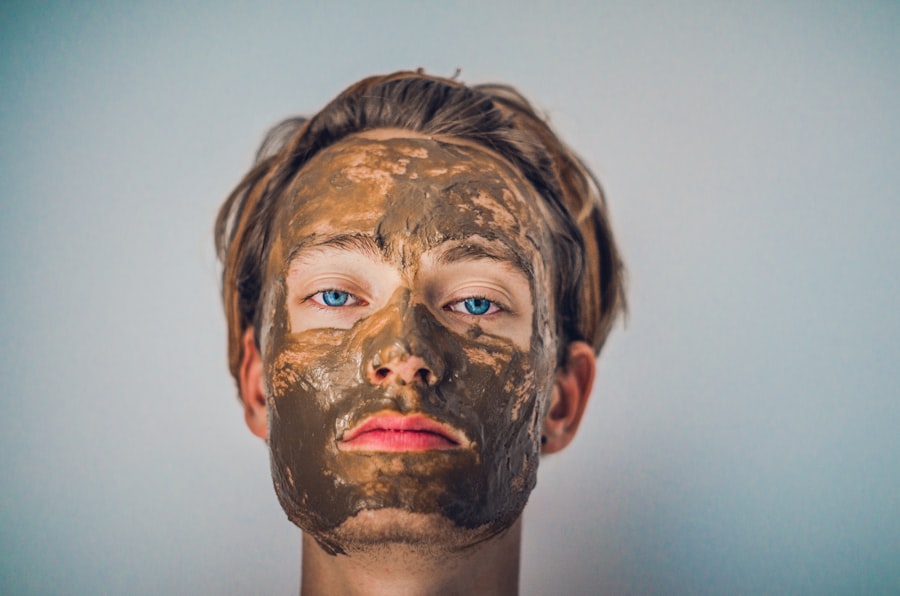Laser hair removal is a popular cosmetic procedure that utilizes concentrated beams of light to target and destroy hair follicles, thereby inhibiting future hair growth.
This technique has gained traction due to its effectiveness and long-lasting results compared to traditional hair removal methods such as shaving, waxing, or plucking.
The procedure typically involves multiple sessions, as hair grows in cycles, and not all hair follicles are active at the same time. During a session, a trained technician uses a handheld laser device to deliver pulses of light to the treatment area. Patients often describe the sensation as similar to a rubber band snapping against the skin, and while some discomfort may be experienced, many devices are equipped with cooling mechanisms to enhance comfort.
The effectiveness of laser hair removal can vary based on several factors, including hair color, skin type, and the specific laser technology used. Generally, individuals with light skin and dark hair tend to achieve the best results due to the contrast that allows the laser to target the pigment more effectively.
Key Takeaways
- Laser hair removal uses concentrated light to target and destroy hair follicles, resulting in long-term hair reduction.
- Potential side effects of laser hair removal may include redness, swelling, and skin irritation, but these are usually temporary.
- Skin damage risks associated with laser hair removal include burns, blistering, and changes in skin pigmentation.
- Factors that influence skin damage from laser hair removal include skin type, hair color, and the skill of the technician performing the procedure.
- To minimize the risk of skin damage during laser hair removal, it is important to choose a reputable and experienced provider and follow pre-treatment and post-treatment care instructions.
- Post-treatment care for laser hair removal may include avoiding sun exposure, using gentle skincare products, and keeping the treated area clean and moisturized.
- Seeking professional advice for laser hair removal is essential to determine if you are a suitable candidate for the procedure and to address any concerns or questions you may have.
- Alternative hair removal methods to consider include waxing, shaving, and electrolysis, each with its own set of pros and cons.
Potential Side Effects of Laser Hair Removal
While laser hair removal is generally considered safe, it is not without its potential side effects. Commonly reported side effects include temporary redness and swelling in the treated area, akin to a mild sunburn. These symptoms usually subside within a few hours to a couple of days post-treatment.
However, some individuals may experience more pronounced reactions, such as blistering or crusting, particularly if they have sensitive skin or if the procedure was not performed correctly. In rare cases, patients may also experience changes in skin pigmentation. This can manifest as either hyperpigmentation (darkening of the skin) or hypopigmentation (lightening of the skin), especially in individuals with darker skin tones.
These changes can be distressing and may take weeks or even months to resolve. It is crucial for prospective patients to have realistic expectations and understand that while side effects are typically mild and temporary, they can occur and should be discussed with a qualified practitioner prior to undergoing treatment.
Skin Damage Risks Associated with Laser Hair Removal

The risk of skin damage during laser hair removal is a significant concern for many individuals considering this procedure. Skin damage can range from mild irritation to more severe complications such as burns or scarring. The likelihood of experiencing such adverse effects often depends on various factors, including the type of laser used, the skill level of the technician, and the individual’s skin type and sensitivity.
One of the primary risks associated with laser hair removal is thermal injury. This occurs when the laser’s heat penetrates too deeply into the skin or when inappropriate settings are used for a particular skin type. For instance, using a high-energy setting on darker skin can lead to burns due to the increased melanin content absorbing more heat.
Additionally, improper technique or lack of adequate cooling measures can exacerbate this risk. Therefore, it is essential for practitioners to tailor their approach based on individual characteristics and to utilize appropriate safety protocols. For more information on the risks and safety measures of laser hair removal, you can visit the American Academy of Dermatology website.
Factors that Influence Skin Damage from Laser Hair Removal
| Factors | Influence on Skin Damage |
|---|---|
| Skin Type | Dark skin tones are more prone to burns and pigmentation changes |
| Hair Color | Darker hair absorbs more laser energy, increasing the risk of skin damage |
| Laser Settings | Incorrect settings can lead to burns, blisters, or scarring |
| Sun Exposure | Tanned skin is more susceptible to burns and changes in pigmentation |
| Skin Sensitivity | More sensitive skin may experience redness, swelling, or irritation |
Several factors can influence the extent of skin damage that may occur during laser hair removal treatments. One of the most critical factors is skin type, which is often classified using the Fitzpatrick scale that ranges from Type I (very fair) to Type VI (very dark). Individuals with darker skin tones have a higher risk of experiencing adverse effects due to increased melanin levels that can absorb more laser energy, potentially leading to burns or pigmentation changes.
Another significant factor is the type of laser technology employed during treatment. Different lasers operate at varying wavelengths and are designed for specific skin types and hair colors. For example, Alexandrite lasers are effective for lighter skin types but may pose risks for darker skin due to their higher absorption rates by melanin.
Conversely, Nd:YAG lasers are better suited for darker skin tones but may require more sessions for optimal results. Additionally, the experience and training of the technician performing the procedure play a crucial role in minimizing risks; an experienced practitioner will be adept at adjusting settings and techniques based on individual patient needs.
How to Minimize the Risk of Skin Damage during Laser Hair Removal
To minimize the risk of skin damage during laser hair removal, several precautions can be taken both by practitioners and patients. First and foremost, it is essential for individuals seeking treatment to choose a reputable clinic with certified professionals who have extensive experience in laser procedures. A thorough consultation should precede any treatment, allowing practitioners to assess skin type, hair color, and medical history to determine the most appropriate laser technology and settings.
Patients can also take proactive steps before their appointment to prepare their skin for treatment. This includes avoiding sun exposure for several weeks prior to the procedure, as tanned skin is more susceptible to burns and pigmentation changes. Additionally, patients should refrain from using certain skincare products that may irritate the skin, such as retinoids or exfoliants, in the days leading up to their session.
Following pre-treatment guidelines provided by the clinic can significantly reduce the likelihood of adverse effects.
Post-Treatment Care for Laser Hair Removal

Post-treatment care is crucial for ensuring optimal healing and minimizing any potential side effects following laser hair removal. Immediately after treatment, patients may experience redness and swelling in the treated area; applying a cool compress can help alleviate discomfort and reduce inflammation. It is also advisable to avoid hot showers, saunas, or vigorous exercise for at least 24 hours post-treatment to prevent further irritation.
In addition to immediate care, long-term skincare practices are essential for maintaining healthy skin after laser hair removal. Patients should apply sunscreen with a high SPF daily to protect treated areas from UV exposure, as sun damage can exacerbate pigmentation changes and hinder healing. Moisturizing regularly can also help soothe any dryness or irritation that may occur following treatment.
Following these guidelines not only promotes recovery but also enhances the overall effectiveness of the laser hair removal process.
Seeking Professional Advice for Laser Hair Removal
Before undergoing laser hair removal, it is imperative for individuals to seek professional advice from qualified practitioners who specialize in this field. A comprehensive consultation allows potential patients to discuss their goals, concerns, and any medical conditions that may affect their suitability for treatment. During this consultation, practitioners should conduct a thorough assessment of the patient’s skin type and hair characteristics while explaining the procedure’s risks and benefits.
Moreover, it is essential for patients to inquire about the specific technology used in their treatment and whether it is appropriate for their unique needs. Understanding what to expect during and after the procedure can help alleviate anxiety and ensure that patients are well-informed about their choices. Practitioners should also provide clear aftercare instructions and be available for follow-up questions or concerns post-treatment.
Alternative Hair Removal Methods to Consider
For those who may be hesitant about laser hair removal or who do not qualify for the procedure due to specific skin types or medical conditions, several alternative hair removal methods are available. Traditional methods such as shaving remain popular due to their convenience and cost-effectiveness; however, they require frequent maintenance and can lead to issues like razor burn or ingrown hairs. Waxing is another common alternative that provides longer-lasting results than shaving but can be painful and may cause irritation or allergic reactions in some individuals.
Chemical depilatories offer a different approach by dissolving hair at the skin’s surface but can also lead to chemical burns if not used correctly. For those seeking a more permanent solution without lasers, electrolysis is an option that involves using electrical currents to destroy hair follicles; however, it can be time-consuming and requires multiple sessions. Ultimately, individuals should weigh their options carefully based on their preferences, pain tolerance, budget, and desired results when considering hair removal methods.
Consulting with a skincare professional can provide valuable insights into which method may be best suited for their unique needs while ensuring safety and efficacy throughout the process.
There is a related article discussing the fashion trends influenced by laser hair removal, which can be found at this link. This article explores how laser hair removal has impacted the way people dress and present themselves, highlighting the confidence boost that comes with smooth, hair-free skin. It also touches on the customization options available for laser hair removal treatments, as discussed in another article found at this link. These articles provide valuable insights into the benefits and possibilities of laser hair removal for those considering the procedure.
FAQs
What is laser hair removal?
Laser hair removal is a cosmetic procedure that uses a concentrated beam of light (laser) to remove unwanted hair. The light is absorbed by the pigment in the hair follicles, which damages the follicle and inhibits future hair growth.
Does laser hair removal cause pain?
Laser hair removal may cause some discomfort, often described as a snapping or stinging sensation. However, most people find the discomfort to be tolerable. Some areas of the body may be more sensitive than others.
Does laser hair removal cause scarring?
When performed by a qualified and experienced professional, laser hair removal should not cause scarring. However, there is a small risk of skin damage, blistering, or changes in skin pigmentation. It is important to choose a reputable provider and follow all pre- and post-treatment care instructions.
Does laser hair removal cause ingrown hairs?
Laser hair removal can actually help reduce the occurrence of ingrown hairs. By targeting the hair follicle, laser hair removal can prevent new hairs from growing and becoming ingrown.
Does laser hair removal cause permanent hair removal?
Laser hair removal can lead to long-term hair reduction, but it is not always permanent. Some people may experience regrowth over time and require maintenance treatments. The effectiveness of the treatment can vary depending on factors such as hair color, skin color, and the specific technology used.





